“The past is a foreign country; they do things differently there.”
The past can be both shocking and familiar. It’s common to say that human nature never changes – but it’s still possible for archaeology to surprise us, by pulling things from the ground which transform our conception of the past.
1. Rosetta Stone
The rediscovery of the Rosetta Stone in 1799 during the French expedition to Egypt effectively began modern Egyptology by repeating a decree issued in 196BC on behalf of King Ptolemy in Ancient Greek and Demotic as well as in hieroglyphs. The stone, a stele that was used as a building material during the Middle Ages, was captured by the British in 1801 and taken to the British Museum a year later, where it remains to this day.
2. Dead Sea Scrolls
The Dead Sea Scrolls are almost 1,000 biblical manuscripts discovered in the decade after World War 2 in what is now the West Bank. The texts, mostly written on parchment but also on papyrus and bronze, are the earliest surviving copies of biblical and extra-biblical documents known to be in existence, dating over a 700-year period around the birth of Jesus. The ancient Jewish sect the Essenes is supposed to have authored the scrolls, written in Hebrew, Aramaic and Greek, although no conclusive proof has been found to this effect.
3. Pompeii
Pompeii, the ancient Roman city, was buried during a volcanic eruption in 79 AD when Mount Vesuvius exploded. It was lost for nearly 1700 years and the damage done to the city was so severe that even the name of the city vanished from memory. In 1738 Herculaneum – a nearby city also lost – was discovered and then ten years later military engineer Rocque Joaquin de Alcubierre discovered Pompeii. Whilst digging in later excavations, Giuseppe Fiorelli discovered that some of the large bubbles in the volcanic mud were perfectly formed molds of the men who had died there. He injected plaster into the bubbles and gave the modern world the first look at real Ancient Roman people. Interestingly the city was full of erotic art and objects (many of which were hidden until 2000 AD) and graffiti found on a wall in Pompeii called the city “Sodom and Gomorrah” leading many Christians to believe that the city was destroyed by God in retribution for its sexual perversities.
4. The Cave of Altamira
When the Cave of Altamira was first discovered it was to unleash a worldwide controversy spanning decades. In this cave, amateur archeologist Marcelino Sanz de Sautuola, led by his twelve year-old daughter, saw for the first time since paleolithic times, artworks created by man previously thought to be incapable of such a feat. Its implications for sociology and archeology were astounding. When the paintings were finally verified as authentic 20 years later, it changed forever the perception of prehistoric human beings. It is hard to fathom how Sautuola must have felt the moment he first glimpsed the paintings.
5. Tutankhamun
“At first I could see nothing, the hot air escaping from the chamber causing the candle flame to flicker, but presently, as my eyes grew accustomed to the light, details of the room within emerged slowly from the mist, strange animals, statues, and gold – everywhere the glint of gold. For the moment – an eternity it must have seemed to the others standing by – I was struck dumb with amazement.” Those are the words of Howard Carter – the man who discovered King Tut’s tomb. They sum up far better than I can the marvelousness of this most important Egyptian discovery in modern times. The importance of this discovery to the understanding of Ancient Egyptian history is probably the greatest ever.
6. Mother goddesses
One of the oldest statues ever discovered depicts an obese woman with swollen breasts. The Willendorf Venus was discovered in Austria, and is 26,000 years old. It is highly unlikely that any member of an ancient society would be so overfed as to be obese, and so the statues are symbolic rather than representative.
These figures were most likely carved to represent motherhood. The presence of rotund figurines in many ancient sites suggests that the earliest-known religious practices were related to the worship of femininity.
7. Knossos
It is not often that archaeological digs can provide evidence for an entirely new civilisation, but that was exactly the result of work by Cretan antiquarian Minos Kalokairinos and his British counterpart Arthur Evans at the end of the 19th century. They unearthed the palace at Knossos, supposedly the site of the Minotaur’s labyrinth from Greek myth.
8. Antikythera Mechanism
In 1901 an ancient shipwreck was discovered by sponge divers off the coast of the Greek island of Antikythera. The construction has been dated to the early 1st century BC. Amongst the finds of typical trade goods such as statues and flasks was found a fused mass of metal. For almost a hundred years after its discovery, the mechanism was regarded as a simple curiosity.
It is now regarded as an early precursor to the computer. The various cogs and wheels of the mechanism are able to calculate where stars and planets should appear in the night sky. This discovery shows not only a keen understanding of the motion of the heavens but also the ability to replicate those movements on an artificial structure. It suggests a mechanistic understanding of the universe which points to the development of science as the best way to deal with the world around us.
9. The Pilate Stone
The Pilate stone (probably the least-known object on this list) was discovered in June of 1961 near Caesarea (part of Judea) by Dr. Antonio Frova while he was excavating with his team of archeologists an Ancient Roman theater built by Herod the Great in 30BC. The stone had been reused in the fourth century as part of a new staircase that had been added later. What was significant about this stone was what the archeologists found inscribed on the side: “To the Divine Augusti [this] Tiberieum … Pontius Pilate … prefect of Judea … has dedicated [this]“. This was the first time physical evidence had been found for the existence of the Biblical Pontius Pilate. Its authenticity is universally recognized by the archeological world.
10. Olduvai Gorge
The Olduvai Gorge runs through Eastern Africa and is probably the most important archeological location on Earth. It contains the remains of 1.9 million year-old humans and, because it was continually occupied for thousands of years, shows the progress of the evolution of man. There have been found tools, evidence of scavenging (human teeth marks on bones instead of cut marks) and hunting, as well as evidence for human social interaction at such an early age. There are also rock art formations in the area. Because of the amount of the remains and signs of human interaction, it was very possibly one of man’s first cities (so to speak).
11. Hagar Qim
When you think of the oldest buildings in the world your mind may immediately go to the Pyramids, or maybe Stonehenge, but in fact the Megalithic temples of Malta are the oldest free-standing structures on the planet. Ħaġar Qim and four other Maltese megalithic structures date back to between 3,600 and 3,200 BCE. They were first excavated and explored in the mid-19th century.
12. The Terracotta Army in Xi’an
The funerary army of the first emperor of China, Qin Shi Huang, dating to the third century BCE was discovered by a group of farmers in Xi’an in 1974. More than 8,000 life-sized soldiers, 130 chariots and 150 separate horses, not to mention countless officials and courtesans, have since been documented, although the majority remain buried underground near the emperor’s mausoleum. It remains one of the most spectacular man-made sites in the world.
13. Tomb of Philip II of Macedon
Vergina is a small town in northern Greece, located in the peripheral unit of Imathia, Central Macedonia. The town became internationally famous in 1977, when the Greek archaeologist Manolis Andronikos unearthed what he claimed was the burial site of the kings of Macedon, including the tomb of Philip II, who is the father of Alexander the Great. In 1977, Andronikos undertook a six-week study near Vergina and found four buried chambers, which he identified as undisturbed tombs. Three more tombs were found in 1980. The discovery was a defining moment in archeology, but the identification of the tomb as that of Philip II has been disputed.
14. Staffordshire hoard
The largest hoard of Anglo-Saxon precious metalwork was found just four years ago in a field near Lichfield, in Staffordshire. More than 3,500 martial items made from gold or silver dated back to the kingdom of Mercia in the seventh and eighth centuries were excavated, with experts describing the hoard as of equal or more importance than the Sutton Hoo discoveries.
15. Baghdad batteries
In the ruins of Mesopotamia, jars were found containing iron cylinders and copper spikes. They were created during the dynasties of Parthian or Sassanid period (the early centuries AD), and probably discovered in 1936 in the village of Khuyut Rabbou’a, near Baghdad, Iraq. They are still a mystery, but speculation has brought some interesting theories. These jars were filled with acidic grape juice, voltage may have been produced. Modern reconstructions of the jars have shown that enough voltage would have been produced to allow electrical use – but at this stage, more evidence is needed. If correct, the artifacts would predate Alessandro Volta’s 1800 invention of the electrochemical cell by more than a millennium.
16. Roman dodecahedra
Sometimes archaeologists discover an artifact whose purpose is a complete mystery – but it is rare for a whole class of artifacts to remain unknown. All over the Roman world, small metal dodecahedra (date from the 2nd or 3rd centuries CE) with circles cut in their faces have been discovered – yet it is unknown what they were originally used for. Some suggest they were used as candle holders (unlikely in an age where oil lamps were the norm), while others think they might have been aids for judging distance.
17. Ancient antibiotics
Scientific antibiotics are about seventy years old. But bones have been found in Nubia – dating from 550AD – which show traces of tetracycline, an antibiotic still used today.
How did people use an antibiotic more than a thousand years before it was discovered? Tetracycline is produced by yeast – and yeast can be used to produce beer. It seems that the ancient Nubians – including their infant children – drank beer as a medicine.
18. Stone spears
At the Southern tip of South Africa, sharp stone fragments – perfectly suited for spear tips – were discovered. They were 200,000 years old – and suggested that humans were hunting for their food much longer ago than had been thought possible. Some evidence suggests that humans may have been hunters even earlier than this: remnants of cooking fires have been found dating up to one million years old.
19. Ancient Chemical Warfare
In 1933 archaeologist Robert du Mesnil du Buisson was searching beneath the ruins of an ancient Roman/Persian battlefield when he came across some siege tunnels that had been dug under the city. In the tunnels he found the bodies of 19 Roman soldiers that seemingly died while trying to desperately escape from something and one Persian soldier clutching his chest. Apparently when the Romans heard the Persians digging under their walls they began digging a tunnel of their own with the idea of dropping in on the Persians from above. The trouble for them was that the Persians heard it and set a trap. As soon as the Roman soldiers dropped through they were met with burning sulfur and bitumen which has the unfortunate effect of turning to acid in your lungs.
20. Diquis Spheres
Known as the stone spheres of Costa Rica, scientists believe these nearly perfect speres were carved around the turn of the millennium. Although there is much speculation as to what they may have been used for, no one is completely sure.
21. Wonders of Sanxingdui
The archaeological site of Sanxingdui, China is a Bronze Age site (circa 2800 to 800 B.C.) located in the town of Guanghan of Sichuan Province .
Sanxingdui is recognized as one of the most important ancient remains in the world for its vast size, lengthy period and enriched cultural contents.
The first Sanxingdui relics were discovered by a farmer in 1929 and excavation has continued ever since. During this period, generations of archaeologists have worked on the discovery and research of the Sanxingdui culture. In 1986, two major sacrificial pits were found and they aroused widespread academic attention around the world.
The Sanxingdui finds are exciting, but they remain enigmatic. No texts have been found, nor is there any mention of this culture in the records of other countries.
The artifact assemblage recovered from this site includes an enormous number of bronze, jade, gold, pottery and bone, discovered in ten caches. The two richest contained more than 1100 artifacts. Analysis of lead and other elements in the bronzes indicates sources similar to those of other cultures along the lower reaches of the Yangtze River. At this point, however, the unique culture that produced these artifacts remains a mystery.
via: china.org.cn
22. Rapa Nui
Popularly known as Easter Island, this is one of the most isolated places in the world, thousands of miles off of the Chilean coast in the South Pacific. The most baffling thing about the island, however, isn’t the fact that humans even managed to find and settle it but that they then proceeded to construct enormous stone heads around the island.
23. Piri Reis Map
Dating to the early 1500s this map shows the coastlines of South America, Europe, and Africa with amazing precision. Apparently it was constructed by general and cartographer Piri Reis (hence the name) from the fragments of dozens of others.
24. Nazca Lines
Although they were literally beneath the feet of archaeologists for hundreds of years, the Nazca Lines weren’t discovered until the early 1900′s for the simple reason that they are nearly impossible to see unless you are directly above them. While there have been numerous explanations ranging from UFO’s to technically advanced ancient civilization, the most probable explanation is that the Nazca people were excellent surveyors, although why they would construct such enormous geoglyphs remains a mystery.
25. Mount Owen Moa
In 1986 an expedition was making its deeper and deeper into the cave system of Mount Owen in New Zealand when it came across the huge claw you’re now looking at. It was so well preserved that it almost seemed like whatever it belonged to had just died recently. Upon excavation and inspection, however, it was determined to belong to an Upland Moa, a large prehistoric bird that apparently came with a nasty set of claws.
26. Voynich Manuscript
Described as the “world’s most mysterious manuscript” this piece of literature has been dated back to early 15th century Italy. With most of its pages filled with what seems to be herbal recipes, none of the plants match known species and the language remains undecipherable.
27. Gobekli Tepe
Although at first glance it may seem like nothing more than a bunch of rocks, this ancient settlement discovered in 1994 was constructed roughly 9,000 years ago and is currently the one of the oldest examples of complex/monumental architecture in the world, predating the pyramids by thousands of years.
28. Sacsayhuaman
This walled complex just outside of Cusco, Peru is part of what used to be the capital of the Inca Empire. The crazy part about this wall, however, is in the details of its construction. The rock slabs fit together so tightly that it would be impossible to slide even a hair between them. It’s a testament to the precision of ancient Incan architecture.
29. Headless Vikings of Dorset
While digging a railroad in Dorset workers came across a small contingent of viking warriors buried in the ground, all missing their heads. At first archaeologists thought that maybe some villagers had survived a raid and exacted their revenge but upon closer inspection things got a little less clear. The beheadings looked too clean and seemed to have been done from the front rather than the back. They are still not sure what happened.
30. The Tomb of Sunken Skulls
While excavating a dry lake bed in Motala, Sweden archaeologists came across several skulls that had stakes driven directly through their craniums. As if that weren’t bad enough one of the skulls even had pieces of the others skulls crammed up inside it. Whatever happened there 8,000 years ago wasn’t pretty.
31. Marcahuasi
Marcahuasi is a plateau in the Andes Mountains located east of Lima, Peru. The area rises over the Rimac River. In 1952, a man named Daniel Ruzo made a remarkable discovery in the area. He found hundreds of stone figures that resemble human faces and animals, some 90 feet tall. The most famous formation was called The Monument to Humanity because it purportedly shows the major human races of the world. The mountain sized rock formations of Marcahuasi have created controversy in the scientific world. Many educated people have claimed that the structures were formed by natural erosion.
Rare Discovery
Some of the famous rock formations at Marcahuasi include the goddess Thueris the Anfichelidia, the valley of the seals, the lion of Africa, the vicuna, and the frog. After discovering the area, Daniel Ruzo made some bizarre accusations surrounding Marcahuasi. He wrote that the sculptures were made ??by a culture named “Masma” or “Fourth Humanity” almost 10.000 years ago. According to Ruzo, every 8,500 years the planet Earth suffers disruptions that threaten the existence of all living beings. Ruzo published articles stating that Marcahuasi was the site selected to preserve the knowledge of humanity. Man-made or not, Marcahuasi remains a remarkable archeological discovery that has become a popular tourist destination.
32. Rat King
Rat kings are formed when a number of rats become intertwined at their tails and get stuck together with blood, dirt, ice, excrement or simply knotted. The animals grow together forming one large beast. The earliest report of a rat king comes from 1564. Historically, the rat king was viewed as a bad omen, and probably with good reason. Rats carry a number of diseases, perhaps most notably plague, so it is understandable that people would associate bad luck with a large cluster of rats. Diseases tend to arise more readily when animals are confined close together, so the location of a rat king could be a breeding ground of disease.
Rare Discovery
Specimens of purported rat kings are rare and kept in some museums. The largest well-known mummified rat king was found in 1828 in a miller’s fireplace at Buchheim, Germany. It consists of 32 rats. The rat king is currently located in the museum Mauritianum in Altenburg (Thuringia). In 1930, a specimen was found in New Zealand that is displayed in the Otago Museum in Dunedin. It was composed of immature Rattus rattus whose tails were entangled by horse hair. Relatively few rat kings have been discovered in history. Depending on the source, the number of reported instances varies between 35 and 50 finds.
The occurrence is particularly associated with Germany, where the majority of rat kings have been located. In April 1929, a group of young forest mice was reported joined in Holstein, Germany, and there have been sightings of squirrel kings. Most rat kings show formations of callus at the fractures of their tails, which according to proponents show that the animals survived for an extended period of time with their tails tangled. A mummified rat king can help provide an understanding of the movement of rat populations. Sightings have been sporadic in modern history, with some rat kings being reported alive. The most recent claim comes from an Estonian farmer’s discovery in the Võrumaa region on January 16, 2005.
33. Sea of Galilee Boat
The Sea of Galilee Boat is an ancient fishing boat from the 1st century CE (the time of Jesus Christ), discovered in 1986 on the north-west shore of the Sea of Galilee in Israel. The remains of the boat were found by brothers Moshe and Yuval Lufan, fishermen from Kibbutz Ginnosar. The brothers are amateur archaeologists with an interest in discovering artifacts from Israel’s past. They found the ship after a drought reduced the water-level of the lake. The men reported their discovery to the authorities who sent out a team of archaeologists to investigate.
Rare Discovery
Realizing that the remains of the boat was of tremendous historical importance to Jews and Christians alike, a secret archaeological dig followed, undertaken by members of Kibbutz Ginosar, the Israel Antiquities Authority, and numerous volunteers. The boat measures at 27 feet (8.27 meters) long, 7.5 feet (2.3 meters) wide and with a maximum preserved height of 4.3 feet (1.3 meters). Excavating the boat from the mud without damaging it was a difficult process that lasted 12 days and nights. The boat was then submerged in a chemical bath for 7 years before it could be displayed at the Yigal Allon Museum in Kibbutz Ginosar.
The Sea of Galilee boat is made primarily of cedar planks joined together by pegged mortise-and-tenon joints and nails. It has ten different wood types, suggesting either a wood shortage or that it was made of scrap wood. The boat is historically important to Jews because it is an example of the type of boat used by their ancestors in the 1st century. Previously only references made by Roman authors, the Bible and mosaics have provided archeologists insight into the construction of these types of vessels. The boat is also important to Christians because it was the type of vessel that Jesus and his disciples used, several of whom were fishermen
34. Andrewsarchus
Roy Chapman Andrews was an American explorer, adventurer and naturalist who became the director of the American Museum of Natural History. He is primarily known for leading a series of expeditions through the fragmented China into the Gobi Desert and Mongolia. In the summer of 1923, Andrews began his third Asiatic expedition in the Gobi Desert, while in Mongolia, a member of his team named Kan Chuen Pao discovered an enormous skull of an unidentified mammal. The lower jaw of the creature was not found. After investigation, the mammal was given the classification of Andrewsarchus mongoliensis.
Rare Discovery
Andrewsarchus lived during the Eocene epoch, roughly 45 and 36 million years ago. They had a long snout with large, sharp teeth and flat cheek teeth that may have been used to crush bones. Because Andrewsarchus is only known from a single skull, whether it was an active predator or merely a large scavenger is open to debate. The artifact is an enormous skull (32.8 in/83 cm long and 22/56 cm wide). If Andrewsarchus was proportioned in the same manner as Mesonyx obtusidens, it had a length from the snout to the back of the pelvis of about 11 feet (3.4 m) and a height from the ground to the shoulder or middle of the back of about 6 feet (1.8 m). In round numbers, it is possible that the creature may have been the largest land-dwelling carnivorous mammal known. The cranium is twice the length of a modern Alaskan brown bear and about triple the length of an American wolf.
Studies have placed Andrewsarchus in the 1000 kg (2200 lb) size range, but if the animals were robust, some specimens might have weighed up to 4000 pounds. The appearance and behavioral patterns of Andrewsarchus are virtually unknown and have been the topic of debate among paleontologists ever since it was first discovered. Andrewsarchus possessed some of the strongest jaws ever evolved in a land mammal, well able to bite through large bones if needed. Andrewsarchus may have fed on beached primitive whales, shellfish and hard-shelled turtles, as well as contemporary large mammals. The creatures were related to cloven-hoofed animals, such as pigs and deer, so they probably had hooves rather than paws.
35. Teotihuacan Sacrifice
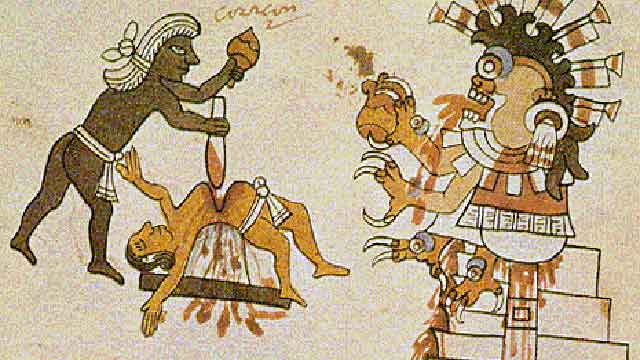
Although it has been known for years that the Aztecs hosted numerous bloody sacrificial festivals, in 2004 a grisly discovery was made outside of modern day Mexico City. Numerous decapitated and mutilated bodies of both humans and animals shed some light on just how horrific the rituals could get.
36. The Grauballe Man
It’s not a strange occurrence for mummified bodies to be found in bogs but this body, now known as the Grauballe Man, is a bit unique. Not only is he amazingly well preserved with his hair and fingernails still intact, it is possible to reconstruct his demise from the information found on and around his body. Judging from a large wound wrapping around his neck from ear to ear it seems he was sacrificed, probably in an attempt to turn a better harvest.
37. The Venetian Vampire
Although these days the most surefire method used to slay vampire is a stake through the heart, hundreds of years ago that was not considered sufficient. The ancient alternative – the brick through the mouth. Think about it. What’s the easiest way to keep a vampire from sucking blood? Cram his face full of cement no doubt. The skull you are looking at here was found by archaeologists just outside Venice in a mass grave.
38. Uluburun Shipwreck
The Uluburun shipwreck is a Late Bronze Age shipwreck dated to the 14th century BCE. It was discovered off Uluburun (Grand Cape) situated about 6 miles southeast of Ka?, in south-western Turkey. The wreck was first discovered in the summer of 1982 by Mehmed Çakir, a local sponge diver from Yalikavak, a village near Bodrum. Between the years of 1984 to 1994, eleven consecutive campaigns took place totaling 22,413 dives, and revealing one of the most spectacular Bronze Age treasure troves ever discovered in the Mediterranean Sea. On its final journey, the Uluburun ship was sailing to the region west of Cyprus. The objects aboard the ship range from northern Europe to Africa, as far west as Sicily, and as far east as Mesopotamia, exhibiting products of nine or ten different cultures.
Rare Discovery
The ship, which was about 50 feet long, was built of cedar in the ancient shell-first tradition, with pegged tenon joints securing planks to each other and to the keel. Some of the hull planks were preserved under the cargo. They were fastened with pegged mortise-and-tenon joints. Upon discovery, there has been a detailed examination of Uluburun’s hull, but unfortunately no evidence of its framing. The ship carried 24 stone anchors, which are of a type almost completely unknown in the Aegean. The Uluburun ship’s cargo consisted mostly of raw materials and trade items.
The artifacts discovered include copper cargo totaling ten tons, approximately 175 glass ingots of cobalt blue turquoise and lavender, ivory in the form of whole and partial elephant trunks, hippopotamus teeth, Cypriot pottery, a ton of terebinthine resin in amphorae, a large collection of gold artifacts, ebony logs from Egypt, and ancient weapons. The ship carried one ton of tin. The tin from Uluburun is, at this time, the only pre-Roman tin with a reasonable provenance. The Uluburun shipwreck has fed into virtually every aspect of research on trade and society in the Late Bronze Age Aegean and Levant. It has helped historians understand the intensity of commercial trade during the Late Bronze Age.
39. Ardi
Ardi is the designation of the fossilized skeletal remains of a female Ardipithecus ramidus, an early human-like species 4.4 million years old. It is the most complete early hominid specimen in existence, with most of the skull, teeth, pelvis, hands and feet intact. Fossils of Ardi were first found in Ethiopia in 1994, but it took 15 years for scientists to assess their significance. Ardi is a more complete set of remains than the Australopithecus Lucy, which was discovered in 1974. She is a more primitive hominid standing at 4 feet (120 cm) tall and weighing around 110 pounds (50 kg), Ardi was about 6 inches taller than Lucy but almost double her weight. The skeleton was discovered at a site called Aramis in the arid badlands near the Awash
River in Ethiopia.
River in Ethiopia.
Rare Discovery
Ardi has feet that are better suited for walking than chimpanzees. Her canine teeth are smaller than humans, and equal in size between males and females. This suggests reduced male-to-male conflict, pair-bonding, and increased parental investment among species. ”Thus, fundamental reproductive and social behavioral changes probably occurred in hominids long before they had enlarged brains and began to use stone tools.” The remains shows evidence of small skull capacity akin to that of apes and a bipedal upright walk akin to that of humans, providing further evidence supporting the view that bipedalism preceded increase in brain size in human evolution. Researchers have inferred from the form of Ardi’s limbs and the presence of her opposable big toe that she was a facultative biped, bipedal when moving on the ground, but quadrupedal when moving in trees.
In trees, Ardi was nothing like modern apes. Modern chimps and gorillas have evolved limb anatomy specialized to climbing vertically up tree trunks, hanging and swinging from branches, and knuckle-walking on the ground. The wrists and finger joints of Ardi were highly flexible. As a result she would have walked on her palms as she moved in the trees. Wear patterns and isotopes have suggested a diet that includes fruits, nuts, and other forest foods. On October 1, 2009, the journal Science published an open-access collection of eleven articles, detailing many aspects of A. ramidus and its environment. “What Ardi tells us is there was this vast intermediate stage in our evolution that nobody knew about,” said Owen Lovejoy, an anatomist at Kent State University in Ohio.
40. The Baby Disposal
One thing you will realize by the end of this list is that people, at least in the past, were very fond of cannibalism, sacrifice, and torture. As a case in point, not long ago as several archaeologists were searching through the sewers beneath a Roman/Byzantine bathhouse in Israel when they came across something terrifying…baby bones, and lots of them. For whatever reason someone in the bathhouse above apparently felt compelled to dispose of hundreds of babies in the sewer below.

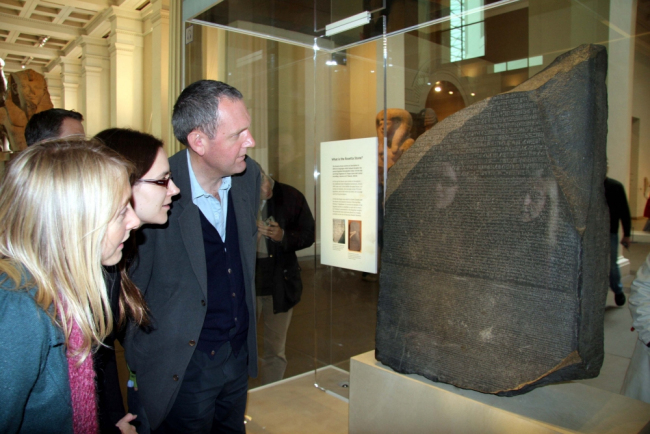

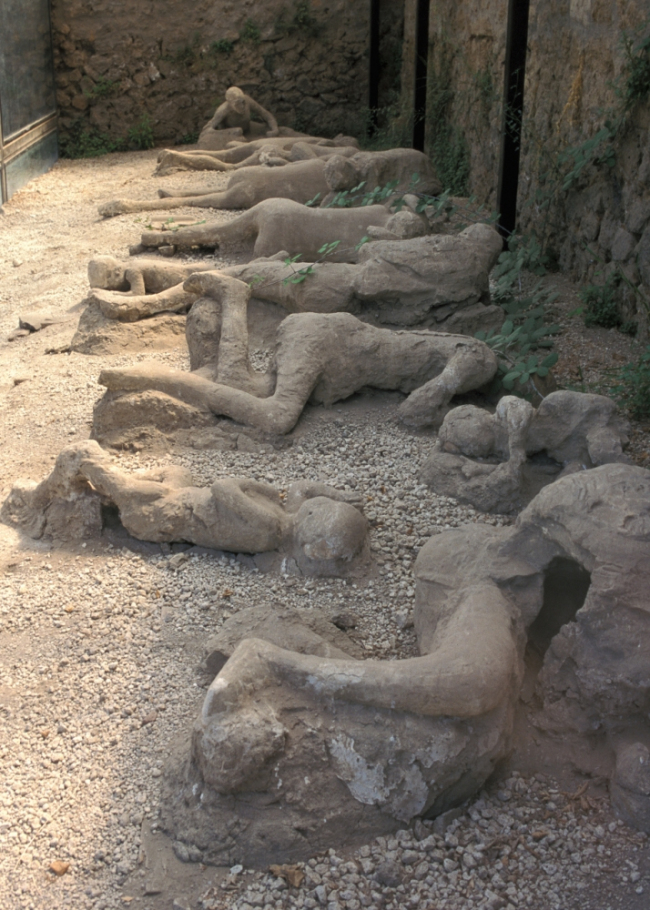
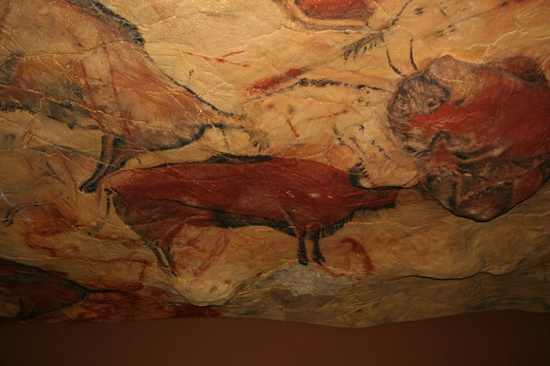
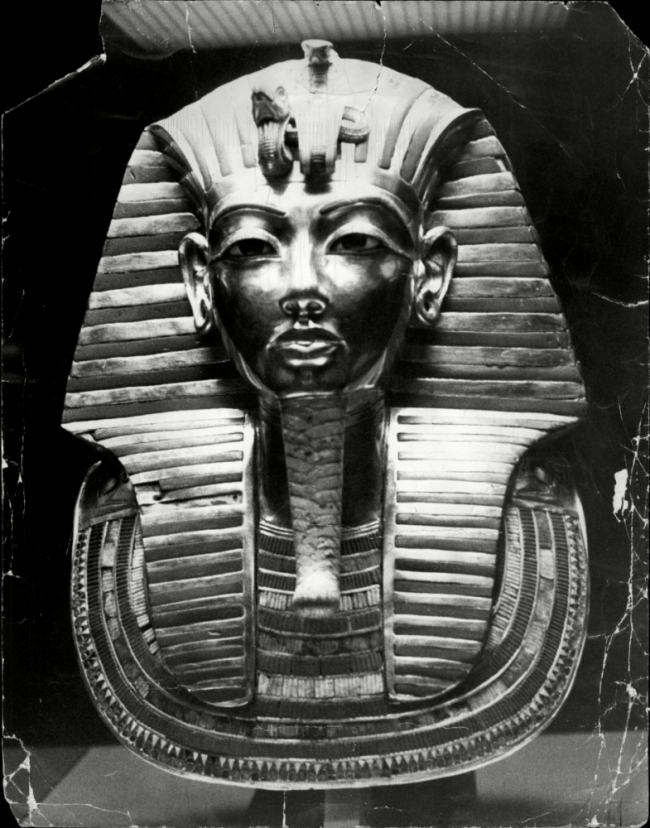
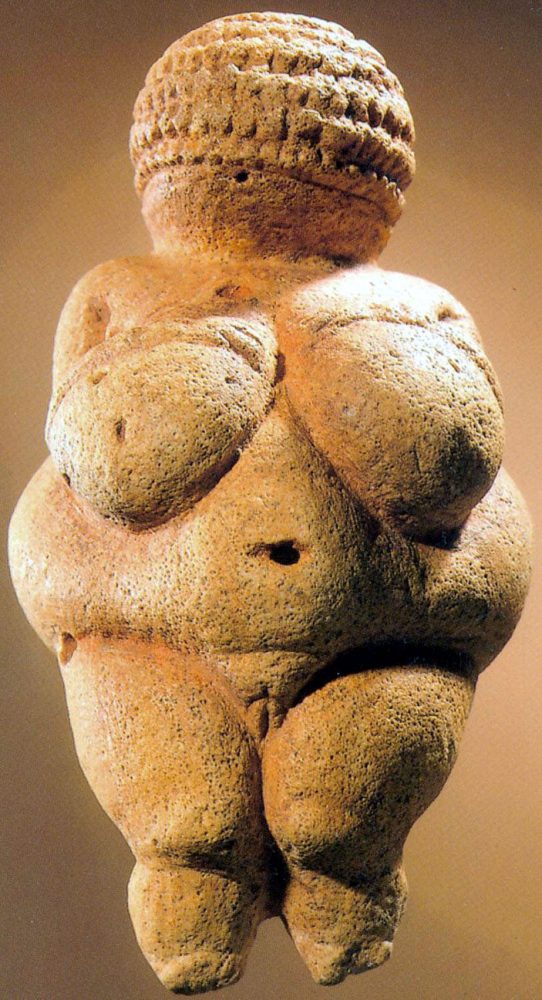
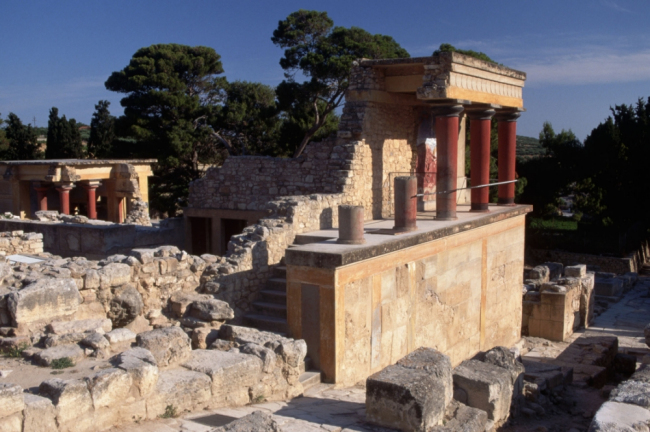
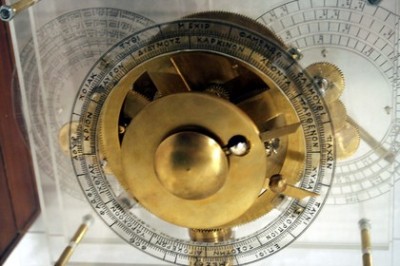
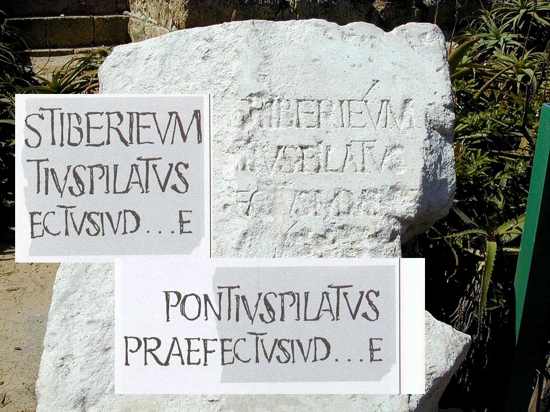
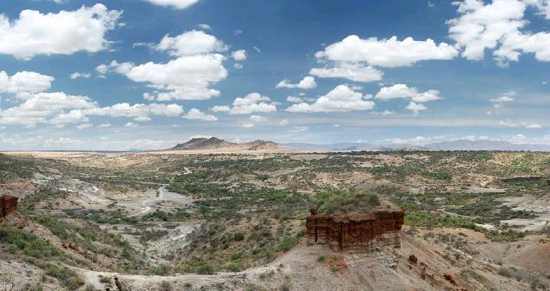

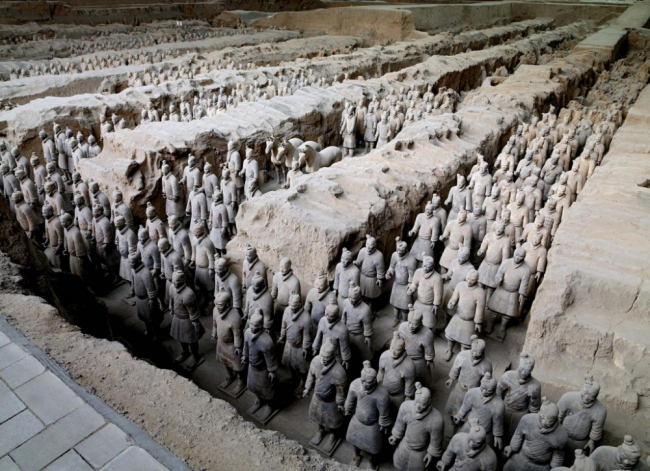

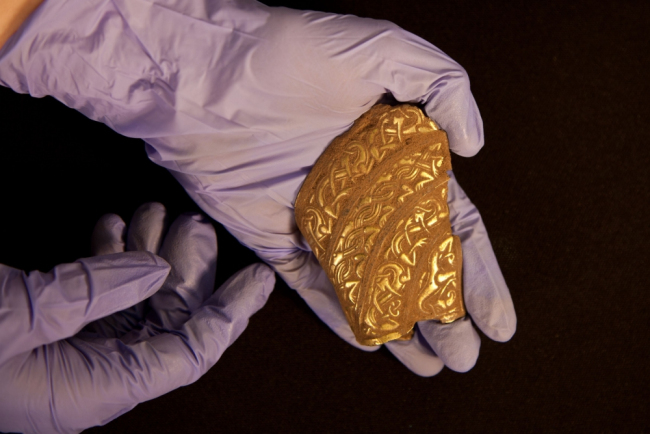
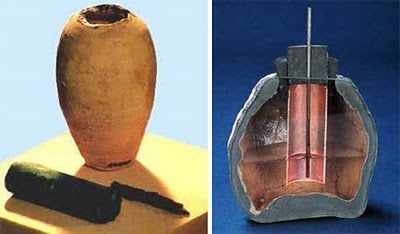



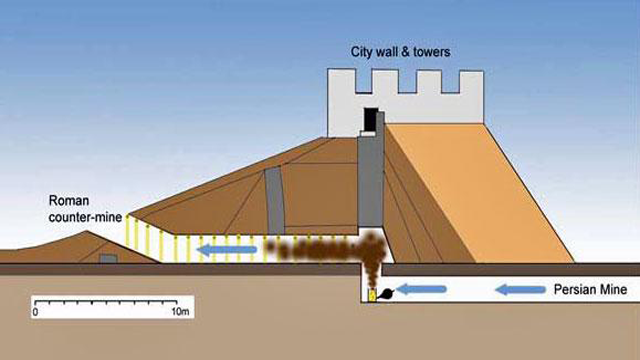

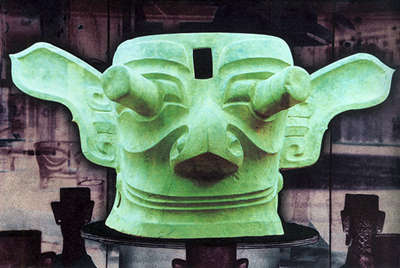
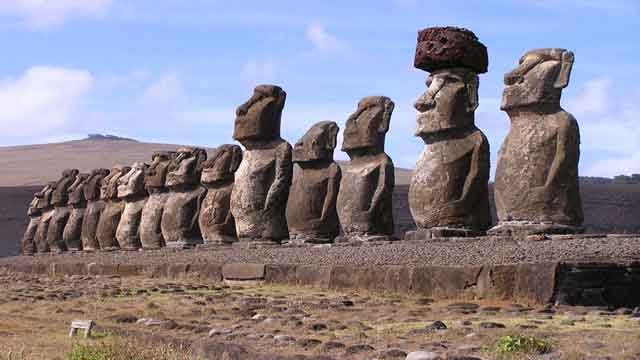

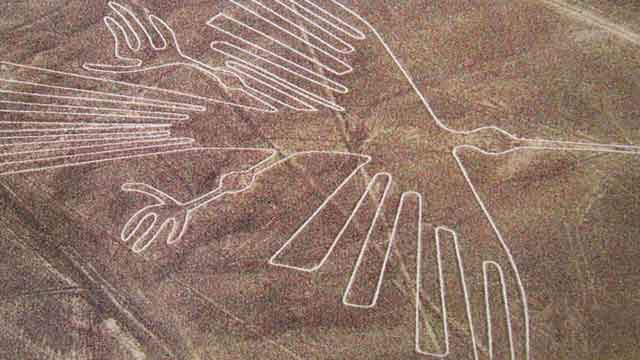
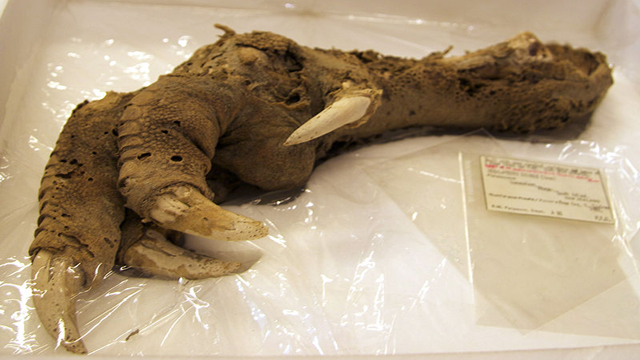
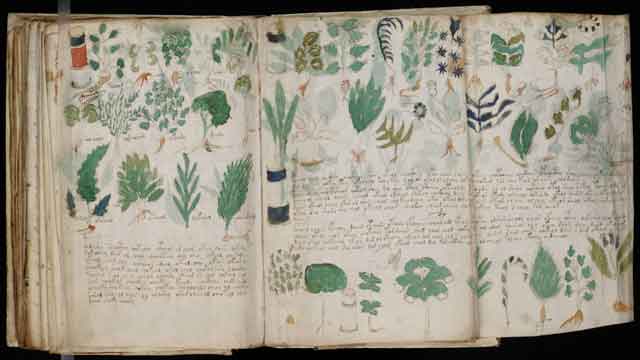

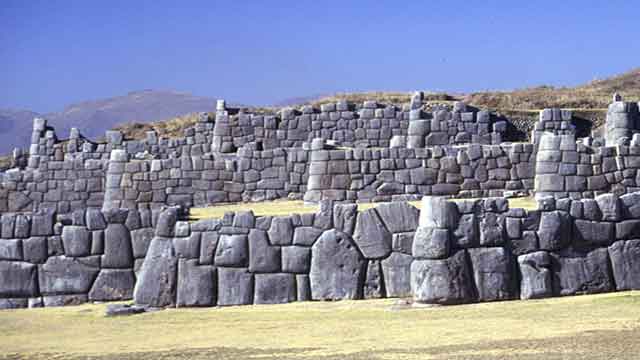


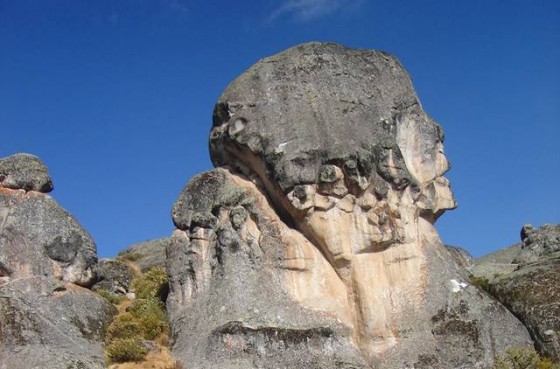
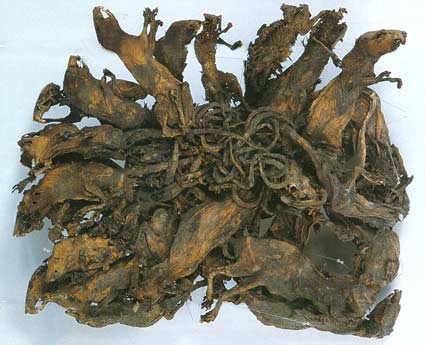

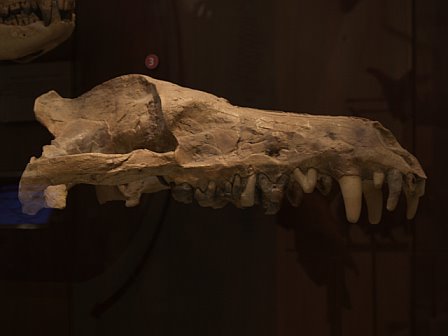

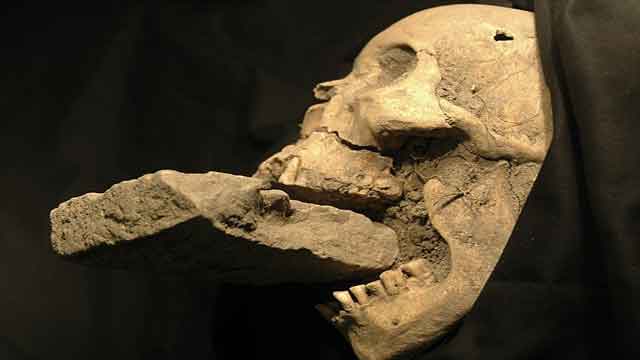
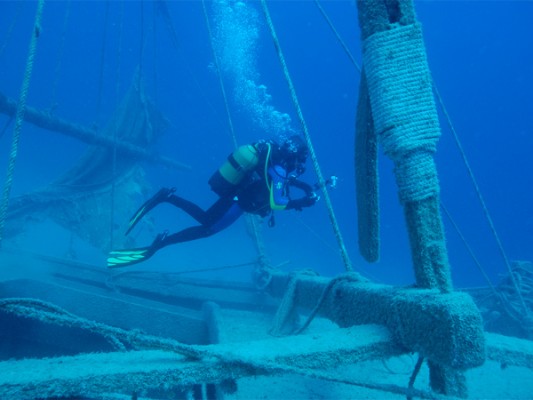
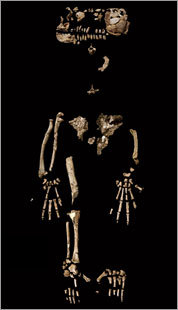
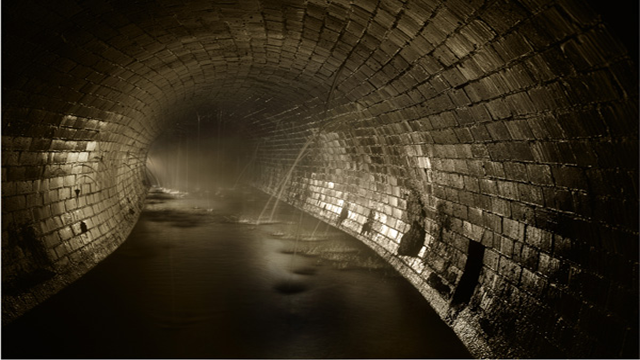
WELCOME TO THE WORLD OF ILLUMINATI: It klub fan 'e ferneamde ynfloed, STAR .... is de wrâld âldste en grutste fraternity fan 4 miljoen leden .... Wy binne ien famylje ûnder ien heit dy't it heechste wêzen is. ... Yn hjir leauwe wy dat wy yn it paradys berne binne en gjin lid moast yn dizze wrâld stride .... As jo libben net de wei giet wêr't jo wolle en jo wolle graach feroarje oan de Illuminati hjoed om $ 8000 te krijen elke 3 dagen en $ 3000.000,00 lid fan 'e sêne foar it dwaan en oanbiede wat jo it moaiste dwaan .. Online direkte ynisaasje Nij registraasje is no no online iepen! ... As jo belangend binne, sjoch email: agentpatrick5@gmail.com Of WhatsApp Us op +2348055329159 Of fia Website http://gravatar.com/agentpatrick5 Of fia blog agentpatrick5.blogspot.com Notes serieuant lid tapasse .... Soargje derfoar dat jo jo geast makke hawwe foardat jo dizze reaksje opnimme .
BeantwoordenVerwijderenWELCOME TO THE WORLD OF ILLUMINATI: It klub fan 'e ferneamde ynfloed, STAR .... is de wrâld âldste en grutste fraternity fan 4 miljoen leden .... Wy binne ien famylje ûnder ien heit dy't it heechste wêzen is. ... Yn hjir leauwe wy dat wy yn it paradys berne binne en gjin lid moast yn dizze wrâld stride .... As jo libben net de wei giet wêr't jo wolle en jo wolle graach feroarje oan de Illuminati hjoed om $ 8000 te krijen elke 3 dagen en $ 3000.000,00 lid fan 'e sêne foar it dwaan en oanbiede wat jo it moaiste dwaan .. Online direkte ynisaasje Nij registraasje is no no online iepen! ... As jo belangend binne, sjoch email: agentpatrick5@gmail.com Of WhatsApp Us op +2348055329159 Of fia Website http://gravatar.com/agentpatrick5 Of fia blog agentpatrick5.blogspot.com Notes serieuant lid tapasse .... Soargje derfoar dat jo jo geast makke hawwe foardat jo dizze reaksje opnimme .